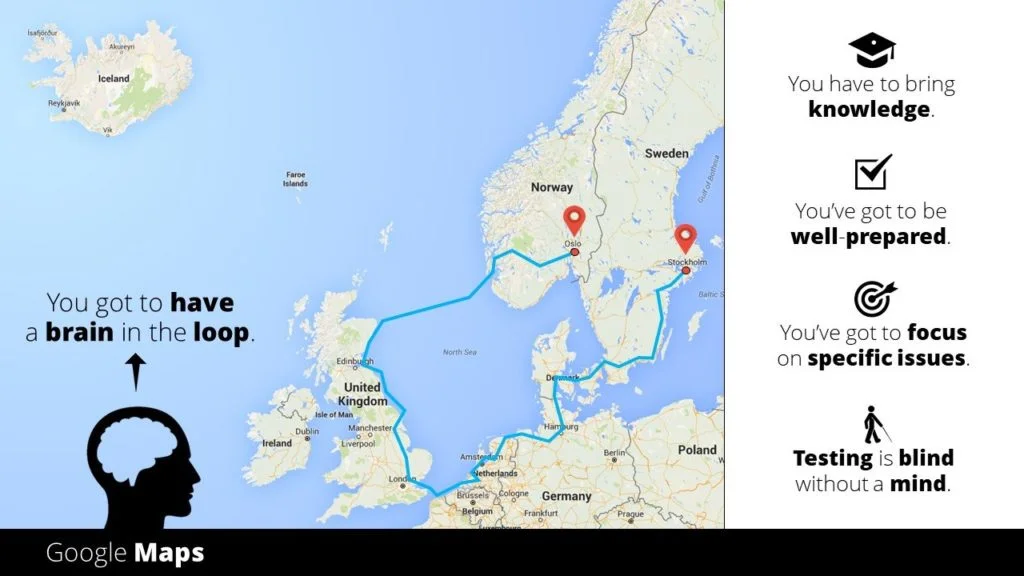
The Forrester Wave™: Autonomous Testing Platforms
As part of its market research, Forrester evaluated 15 autonomous...
One way to conduct exploratory testing is to take the approach of tour-based testing. A testing tour is an exploration around a theme, and it can be used to provide a clear focus to your session, helping you to set a realistic goal.
One way to conduct exploratory testing is to take the approach of tour-based testing. A testing tour is an exploration around a theme, and there are many different types of tours and schools of thought around the practice. A tour can be used to provide a clear focus to your session, helping you to set a realistic goal.
Let’s look at Google Maps for an exploratory testing example focused on tour based testing. Imagine you want to go from Oslo to Stockholm.

A few years back, this is what Google Maps suggested as a route. How do we find these sort of bugs?
This bug went through dozens of dozens of reviewers and nobody saw it. Not everybody has the instincts to find these sort of bugs, and no one wants to build their career off of pure luck. So how do we do it with exploratory software testing?
1. Understand the application
First of all, you need to understand your application from a business and technical perspective. In this particular case, it takes the understanding that there can be black spots, or dark spots, in the mapping data. There can be areas where the mapping data is incomplete or where old mapping data is connected to new mapping data, etc.
2. Be prepared
You also need to be prepared to gain that knowledge. If you take this knowledge and focus on the boundaries of these black spots, you will find these sort of bugs. But, you won’t find them without any preparation at all, or be doing only black-box exploratory testing.
3. Focus on specific issues
But you won’t find those issues if you focus on 10 different things at the same time – you need to focus on very specific issues, which is what tour-based testing helps you accomplish. If you have one specific goal surrounded by a comprehensible and manageable scope, you know exactly what you are looking for.
4. Use your brain
Ultimately, testing is blind without the mind, because there is no brain in the loop (per se) when it comes to formal testing. That’s the reason we do exploratory testing. We do all that in order to maximize the quality of our software products, or to be more precise, to maximize quality at an ever-increasing speed.
Exploratory testing is the process of learning the product, designing test cases, executing test cases and interpreting the test results at the same time. Hence, it represents the perfect counterpart. Tricentis Exploratory Testing tools help Agile teams optimize exploratory testing with simplified planning, documentation, and reporting. Read more.
What is Continuous Testing, what does it mean for Continuous Testing in DevOps, Agile, Continuous Integration & Continuous Delivery, and how is it different than QA test automation? Read more.
Jira-based exploratory testing for agile teams. Available for Jira Server on Atlassian Marketplace. Simplify exploratory session planning, documentation & reporting. Read more.

As part of its market research, Forrester evaluated 15 autonomous...

Scale testing, ensure compliance, and modernize legacy systems with...

Gain unprecedented visibility into your agentic AI toolset with...

Watch our webinar to find out how Tricentis Tosca and Data...

Learn the key elements of a data integrity strategy that can help...

Experts explore why friction persists in even the most advanced...